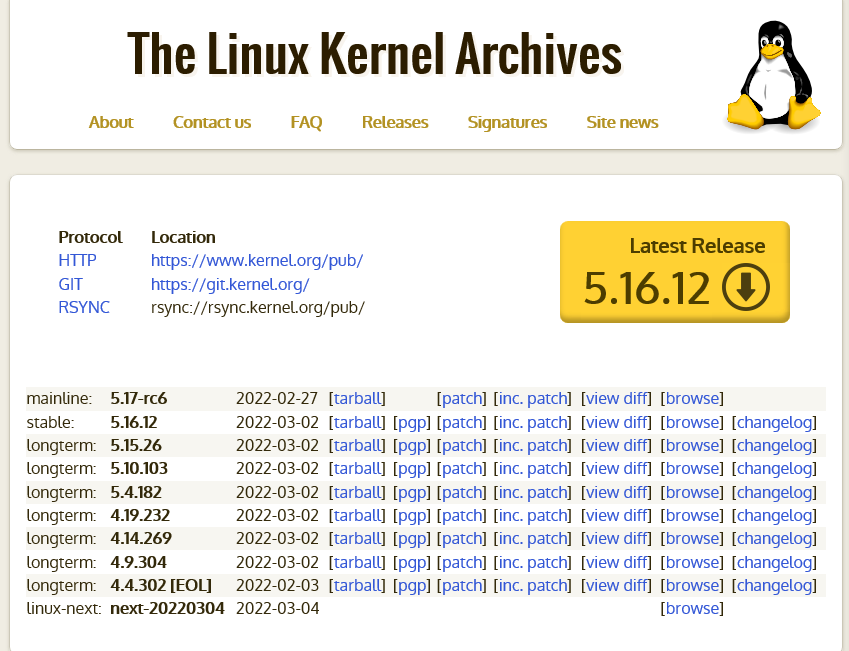What does linux kernel porting mean?
In Linux, kernel transplantation refers to transferring program code from one hardware platform to another hardware platform to run; transplantation is to recompile the kernel to support the corresponding hardware based on the hardware platform selected by the user. So that it can run on the hardware platform. If the corresponding hardware driver or other kernel module is missing, you can develop it yourself and add it to the kernel to compile it together to finally achieve support for the hardware.

#The operating environment of this tutorial: linux7.3 system, Dell G3 computer.
What is Linux kernel transplantation
The so-called transplantation is to transfer the program code from one operating environment to another operating environment. For kernel transplantation, it mainly involves moving from one hardware platform to running on another hardware platform.
Kernel transplantation is to recompile the kernel to support the corresponding hardware according to the hardware platform of your choice so that it can run on the hardware platform. If the corresponding hardware driver or other kernel module is missing, you can do it yourself Corresponding development is added to the kernel and compiled together to finally achieve hardware support.
The origin of the kernel
Linux is an open source computer operating system kernel. It is mainly written in C language. Since it is open source, there must be many people involved in development and maintenance. The reason why Linux has developed so fast is because it is open source. There are many people using it and many problems are found. If they find it difficult to use, they will be dismissed. Someone optimized it. The main modules (or components) of the Linux kernel are divided into the following parts: storage management, CPU and process management, file system, device management and driver, network communication, as well as system initialization (boot), system calls, etc.
Linux was first designed by Finnish Linus Torvalds. At that time, due to the commercialization of UNIX, Professor Andrew Tannebaum developed the Minix operating system so that it could not be bound by the AT&T license agreement and provide an operating system for teaching and research. It was released on the Internet and was freely available to students all over the world. Without further ado, let’s get straight to the topic.
How to carry out kernel transplantation
1. Version and download
Linux has developed from 1991 to the present, version What has become? I believe everyone also wants to know, so where to watch and where to download? The editor has prepared the kernel download URL for everyone: https://www.kernel.org/. You can see it by clicking on it directly. The interface is as follows :

sudo apt-get install lzop
tar jxvf linux-imx-rel_imx_4.1.15_2.1.0_ga.tar.bz2


给予脚本权限,直至脚本变绿,如下:

./mx6ull_nand.sh编译程序,出现图形界面可以先不去配置,直接exit退出,继续等待编译完成(内核编译需要的时间较长,建议大家准备好瓜子)。编译完成以后就会在 arch/arm/boot 这个目录下生成一个叫做 zImage 的文件,zImage 就是我们要用的 Linux 镜像文件。另外也会在 arch/arm/boot/dts 下生成很多.dtb 文件,这些.dtb 就是设备树文件。后面做驱动开发的时候会经常跟这些.dts文件打交道的,编译之后的文件如下:

3、内核的使用
先设置交叉编译工具变量,进入顶层Makefile中设置如下:

使用如下命令编译Linux:
make xxx_defconfig //使用默认配置文件配置 Linux make menuconfig //启动图形化配置界面 make -j2 //编译 Linux
至此,Linux内核部分就给大家分享到这里了,动手操作起来吧。
相关推荐:《Linux视频教程》
The above is the detailed content of What does linux kernel porting mean?. For more information, please follow other related articles on the PHP Chinese website!

Hot AI Tools

Undresser.AI Undress
AI-powered app for creating realistic nude photos

AI Clothes Remover
Online AI tool for removing clothes from photos.

Undress AI Tool
Undress images for free

Clothoff.io
AI clothes remover

AI Hentai Generator
Generate AI Hentai for free.

Hot Article

Hot Tools

Notepad++7.3.1
Easy-to-use and free code editor

SublimeText3 Chinese version
Chinese version, very easy to use

Zend Studio 13.0.1
Powerful PHP integrated development environment

Dreamweaver CS6
Visual web development tools

SublimeText3 Mac version
God-level code editing software (SublimeText3)

Hot Topics
 1377
1377
 52
52
 Unable to log in to mysql as root
Apr 08, 2025 pm 04:54 PM
Unable to log in to mysql as root
Apr 08, 2025 pm 04:54 PM
The main reasons why you cannot log in to MySQL as root are permission problems, configuration file errors, password inconsistent, socket file problems, or firewall interception. The solution includes: check whether the bind-address parameter in the configuration file is configured correctly. Check whether the root user permissions have been modified or deleted and reset. Verify that the password is accurate, including case and special characters. Check socket file permission settings and paths. Check that the firewall blocks connections to the MySQL server.
 C language conditional compilation: a detailed guide for beginners to practical applications
Apr 04, 2025 am 10:48 AM
C language conditional compilation: a detailed guide for beginners to practical applications
Apr 04, 2025 am 10:48 AM
C language conditional compilation is a mechanism for selectively compiling code blocks based on compile-time conditions. The introductory methods include: using #if and #else directives to select code blocks based on conditions. Commonly used conditional expressions include STDC, _WIN32 and linux. Practical case: Print different messages according to the operating system. Use different data types according to the number of digits of the system. Different header files are supported according to the compiler. Conditional compilation enhances the portability and flexibility of the code, making it adaptable to compiler, operating system, and CPU architecture changes.
 【Rust Self-study】Introduction
Apr 04, 2025 am 08:03 AM
【Rust Self-study】Introduction
Apr 04, 2025 am 08:03 AM
1.0.1 Preface This project (including code and comments) was recorded during my self-taught Rust. There may be inaccurate or unclear statements, please apologize. If you benefit from it, it's even better. 1.0.2 Why is RustRust reliable and efficient? Rust can replace C and C, with similar performance but higher security, and does not require frequent recompilation to check for errors like C and C. The main advantages include: memory security (preventing null pointers from dereferences, dangling pointers, and data contention). Thread-safe (make sure multi-threaded code is safe before execution). Avoid undefined behavior (e.g., array out of bounds, uninitialized variables, or access to freed memory). Rust provides modern language features such as generics
 What are the 5 basic components of Linux?
Apr 06, 2025 am 12:05 AM
What are the 5 basic components of Linux?
Apr 06, 2025 am 12:05 AM
The five basic components of Linux are: 1. The kernel, managing hardware resources; 2. The system library, providing functions and services; 3. Shell, the interface for users to interact with the system; 4. The file system, storing and organizing data; 5. Applications, using system resources to implement functions.
 How to solve mysql cannot be started
Apr 08, 2025 pm 02:21 PM
How to solve mysql cannot be started
Apr 08, 2025 pm 02:21 PM
There are many reasons why MySQL startup fails, and it can be diagnosed by checking the error log. Common causes include port conflicts (check port occupancy and modify configuration), permission issues (check service running user permissions), configuration file errors (check parameter settings), data directory corruption (restore data or rebuild table space), InnoDB table space issues (check ibdata1 files), plug-in loading failure (check error log). When solving problems, you should analyze them based on the error log, find the root cause of the problem, and develop the habit of backing up data regularly to prevent and solve problems.
 Can mysql run on android
Apr 08, 2025 pm 05:03 PM
Can mysql run on android
Apr 08, 2025 pm 05:03 PM
MySQL cannot run directly on Android, but it can be implemented indirectly by using the following methods: using the lightweight database SQLite, which is built on the Android system, does not require a separate server, and has a small resource usage, which is very suitable for mobile device applications. Remotely connect to the MySQL server and connect to the MySQL database on the remote server through the network for data reading and writing, but there are disadvantages such as strong network dependencies, security issues and server costs.
 Where is the C language function library? How to add the C language function library?
Apr 03, 2025 pm 11:39 PM
Where is the C language function library? How to add the C language function library?
Apr 03, 2025 pm 11:39 PM
The C language function library is a toolbox containing various functions, which are organized in different library files. Adding a library requires specifying it through the compiler's command line options, for example, the GCC compiler uses the -l option followed by the abbreviation of the library name. If the library file is not under the default search path, you need to use the -L option to specify the library file path. Library can be divided into static libraries and dynamic libraries. Static libraries are directly linked to the program at compile time, while dynamic libraries are loaded at runtime.
 Solutions to the errors reported by MySQL on a specific system version
Apr 08, 2025 am 11:54 AM
Solutions to the errors reported by MySQL on a specific system version
Apr 08, 2025 am 11:54 AM
The solution to MySQL installation error is: 1. Carefully check the system environment to ensure that the MySQL dependency library requirements are met. Different operating systems and version requirements are different; 2. Carefully read the error message and take corresponding measures according to prompts (such as missing library files or insufficient permissions), such as installing dependencies or using sudo commands; 3. If necessary, try to install the source code and carefully check the compilation log, but this requires a certain amount of Linux knowledge and experience. The key to ultimately solving the problem is to carefully check the system environment and error information, and refer to the official documents.




